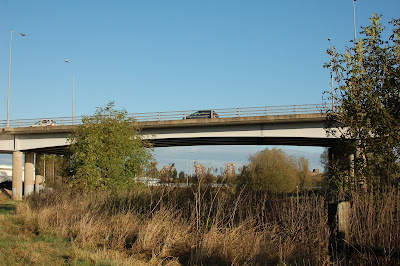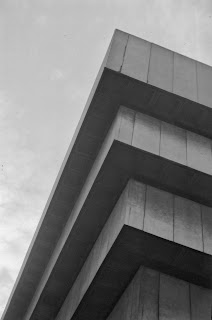Monday, 28 November 2016
Friday, 25 November 2016
The Linz Chapter
An excerpt from The Linz Chapter at the launch of Kristallin #38: Goodbye Wittgenstein - an exhibition at Salzamt, Linz in Austria. I was very honoured to be included in this group show together with Emily Warner, Pete Ashton, Trevor Pitt, Thomas Philipp, Verena Henetmayr and Andre Zogholy.
Sunday, 7 August 2016
Tuesday, 19 July 2016
Goodbye Wittgenstein
Goodbye Wittgenstein
25 July – 5 August 2016
Goodbye Wittgenstein is
an international exchange programme between artists and academics from qujOchÖ in Linz, Austria and artists
selected by A3 Project Space in
partnership with BOM (Birmingham Open
Media), UK.
Participants
in the programme take the relationship between the Austrian born philosopher
Ludwig Wittgenstein and David Hume Pinsent from Birmingham as a starting point
for a series of projects that will happen in Linz and Birmingham during 2016. The
projects respond to Wittgenstein’s early text ‘Notes on Logic’ which was
dictated by Wittgenstein in 1913 during a visit to see David in Birmingham.
‘Notes in Logic’ is notably the predecessor of what is considered to be one of
the most important philosophical texts of the 20th Century,
‘Tractatus Logico Philosophicus’.
The
first phase of the Goodbye Wittgenstein programme is a visit to Birmingham from
qujOchÖ artists Verena Henetmayr, Thomas Philipp and Andre Zogholy who will be
in residence at BOM from 25 July to 5 August 2016. Using BOM as their base they
will be enacting and documenting a series of public interventions at places
that are connected to the life of Wittgenstein and Pinsent, including; Town
Hall Birmingham and the original sites of Selly Wick House, the family home of
the Pinsents on Lordswood Road in Harborne and the Berlitz School of Language on
Paradise Street where Wittgenstein dictated “Notes on Logic” to a German
speaking stenographer.
The
residency includes public events at BOM on 28 July and 4 August and will
culminate in a presentation of their interventions at Stryx as part of Digbeth
First Friday, 5 August.
Related
Events:
Wittgenstein and the Linz / Birmingham
connection
28
July, 6.30 pm
BOM
free
Artists
Verena Henetmayr, Thomas Philipp and Andre Zogholy from qujOchÖ
who are participating in the Goodbye Wittgenstein
international exchange will talk about the development of their projects.
Writer
Mike Johnston has written extensively about Wittgenstein’s relationship with
Birmingham and will talk about his visits to see Pinsent between1912-13. Along
with artists Emily Warner and Trevor Pitt, they will talk about the projects
they are developing for their forthcoming residencies at Atelierhaus Salzamt,
Linz in November 2016.
Clayton
Shaw will talk about a set of placements run by SAMPAD that took place at Ars
Electronica Festival, Linz for artists and practitioners working with young
people who have a desire to enhance their skills and knowledge of the use of
digital products and technology within their work.
Darryl
Georgiou will talk about working at the Futurelab as part of his artist residency at the Ars
Electronica centre in
Linz, Austria during July - September 2014.
The
presentations will be followed by the chance to informally network and build
more connections between Birmingham and Linz.
Logic, Love & Kaiserschmarrn
4
August, 7.00 pm
BOM
free
qujOchÖ
will talk about their work at the interfaces of art, politics, society,
technology and science. They will show what it feels like to enter a wellness zone together with the famous French philosopher Michel Foucault, how to burn 21 million pounds on a Brazilian beach and why
almost no one in Austria knows anything about ‘Sound of Music‘. Moreover they
will serve super sweet Austrian Kaiserschmarrn & Zwetschkenknödel to the
audience.
Goodbye Wittgenstein, qujOchÖ
5
August, 6.00 pm as part of Digbeth First Friday
Stryx
Artists
Verena Henetmayr, Thomas Philipp and Andre Zogholy from Linz, Austria will present outcomes of
their residency at BOM including traces of their interventions in public spaces
in Birmingham connected to the relationship between Ludwig Wittgenstein and his
close friend from Birmingham, David Pinsent.
Supported
by:
Supported by Austrian Cultural
Forum London, The Austrian Federal Chancellery - Arts and Culture Division, The
State of Upper Austria,The City of Linz, A3 Project Space, BOM (Birmingham Open Media)
and Stryx.
Links:
http://digbethfirstfriday.com
http://www.linz.at/kultur/salzamt.asp
http://mikeinmono.blogspot.com
http://emily-warner.com
http://www.podprojects.org
http://www.peteashton.com
http://www.britishwittgensteinsociety.org/wittgenstein-linz-birmingham-art-project
http://www.kunstforum.de/nachrichten.aspx?id=11973
http://www.linz.at/kultur/salzamt.asp
http://mikeinmono.blogspot.com
http://emily-warner.com
http://www.podprojects.org
http://www.peteashton.com
http://www.britishwittgensteinsociety.org/wittgenstein-linz-birmingham-art-project
http://www.kunstforum.de/nachrichten.aspx?id=11973
Thursday, 5 May 2016
Wednesday, 16 March 2016
The Model of Paradise
Quotes from Steven Gartside, Model Forms: Sculpture / Architecture in 50s & 60s’ Britain
(Henry Moore Institute, 2002) [Henry Moore Institute Essays on Sculpture – 37]
If nothing were missing, there would be no reason for the model’s
existence. Thus, the viewer is invited to play a role of speculation, tracing
threads towards an imagined end.
We see in the photograph above anonymous officials
considering the model before them of John Madin’s proposed Civic Centre for
Birmingham which in 2016 is currently being demolished.
The model is part of a curtailed language structure – an
expression of the context of its time. It is also part of a communication
system that is ultimately only partially effective. It could even be said that
the model comments on the practice of architecture and sculpture, by operating
as a meta-architecture or a meta-sculpture. To produce a model is the process
of making the unformed formed. What exists in the mind, and through a
collection of other expressions, has to be turned into physical form, but not
necessarily the final form. It is here that the central act of translation has
to occur; with the caveat that this is not all there is.
The model is an acknowledgement of a position within the
process of production. The viewer is presented with something that, out of
time, has no official / real state.
Madin’s model is an ideal and the final building its shadow.
The distortion in the transformation / correspondence to reality was brought
about by spending cuts at Birmingham City Council in the 1970s.
In theory, the model allows for the production of a state
of grace – the object unfettered by the everyday limitations of ‘real’
existence.
If the model is an object, then what kind of object is it?
Its existence, when viewed in isolation, has a certain uniqueness – complete,
yet incomplete, a model form of something else, without context or mitigating
circumstance. There is a kind of freedom in the model – one primarily connected
to its indeterminacy as an object. Its freedom denies a conventional system of
value, because the object is removed from systems of consideration. The level
of the indeterminate is extended by the possibility of relating the model
either to origin (thought) or to eventuality (finished work.)
Madin’s model has made the officials appear like seated
gods judging the fate of the world far beneath them. However, their presence
in the photograph is also a ‘reproach to idealisation’ by giving it a real,
human context – completing the symbol.
In this way the model can move towards a fictive state – a
narrative begun by the maker to be completed by the viewer. This allows the
viewer a way out of a destructive endgame, one that fails to move outside the
model as an incomplete project. To encourage the viewer to imagine a range of
likely outcomes for the final work could be seen as bypassing the conditions of
museum purpose. It is, perhaps, the same as the use of narrative in history
paintings – the object is finished, but it is difficult not to make the image
move on in the mind. Narrative impulse is strong, and can be the perfect
complement to indeterminacy.
Context provides architecture with the experience of dirty
realism – the messy fractures in control that everyday experience brings. In a
mass of schemes and developments, only a few can escape relatively unscathed
from the compromising realities of use. Space is transitory, place has a
central core of permanence. Idealised space is fine, non-existent space invents
its own rules. In the production of actual space, time is crucial. The marks of
time are not those of material against environment. Time is about the loosening
of control – idealised space being replaced by real space. Model forms allow us
to take a step out of that. Not a step backwards, rather a step outside time – an
immersion in space, or spatial concepts. The relief is temporal, as the dirty
realism of everyday life waits to exert its presence with slow, even power.
Sunday, 3 January 2016
Subscribe to:
Comments (Atom)














































